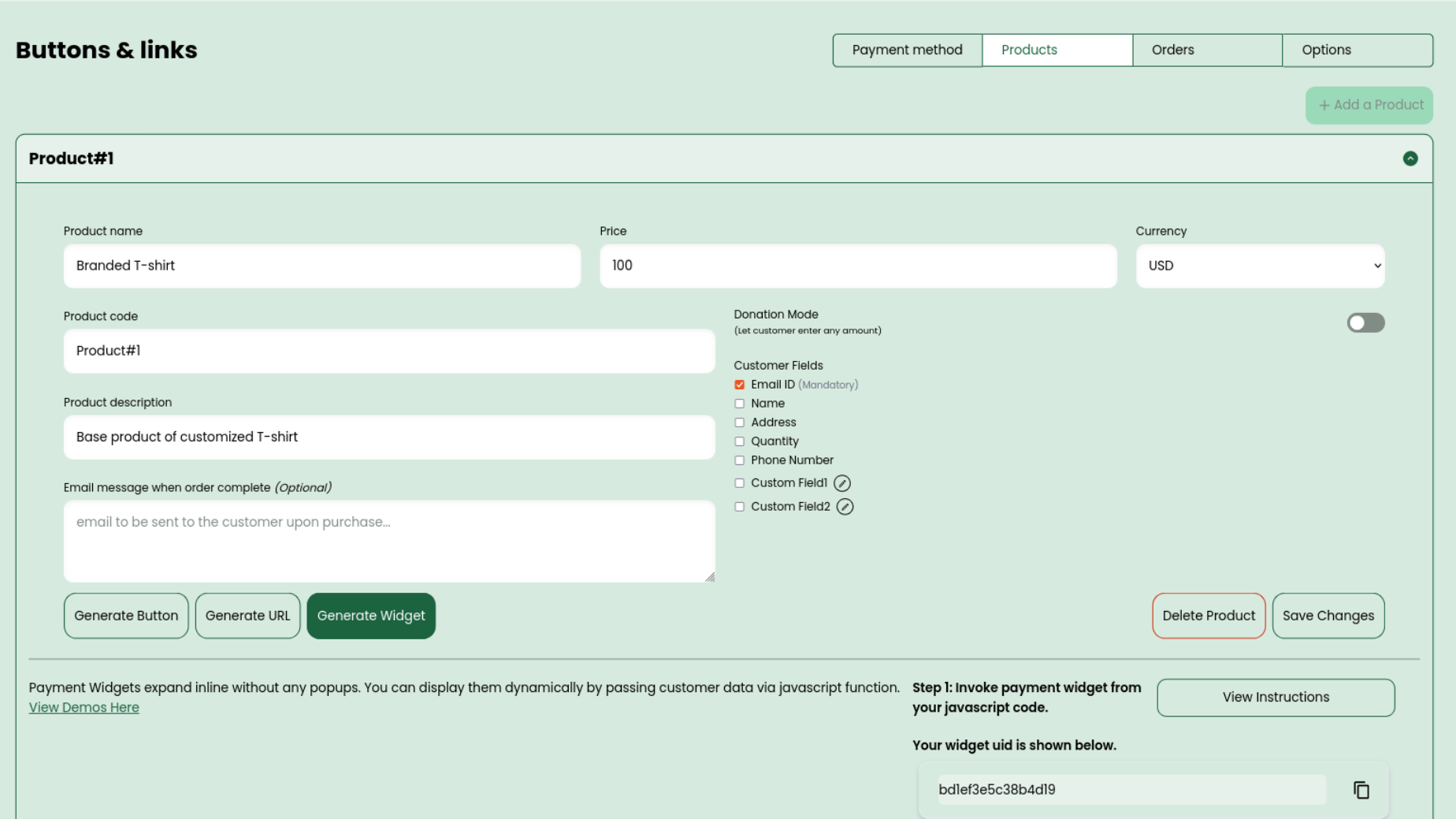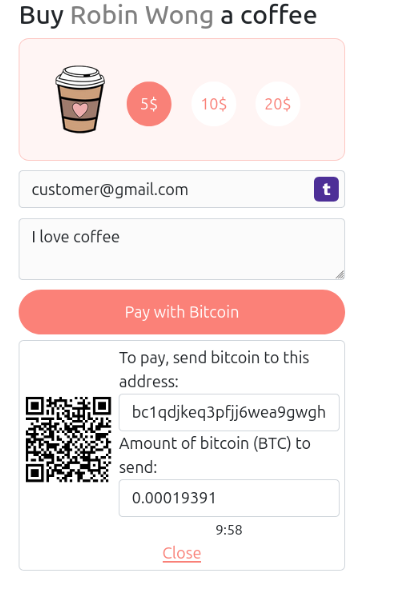Checkouts is a lite version of receive payments API using payment button/widget.
https://www.blockonomics.co/dashboard#/link?ordersCheckouts provide a dynamic way to collect charges from customers and add custom data to your products. To make a decision on whether your application needs to use the native Receive Payments API or Checkouts, feel free to see the below table
| Features | Receive Payments API | Checkouts/Payment Button API |
|---|---|---|
| Order Management | You | Blockonomics |
| Checkout UI | You | Blockonomics |
| Email for order confirmations | You | Blockonomics |
| Customer Fields Input | You | Blockonomics |
During checkout, merchant creates temporary products via API which are shown via payment button/widget. Let's see how to use checkouts in few easy steps.
Step1 - Create Parent Product
The parent product must be created via Products tab in Buttons and Links. The parent product specifies the default value of all attributes. Note the widget uid in the screenshot below:

Sample creation of Parent Product
Step 2 - Create temp product
Temp product can be created by calling the Create temporary product endpoint. The widget uid shown in Step 1 must be specified in the parent uid field.
Few points about temp products:
- Temp product inherits all fields from its parent product.
- Temp products are automatically deleted after 7 days.
Step 3 - Show Checkout
Checkout UI can be shown using either payment button/widget. Both use the uid of the temp product returned from Step 2.
Payment Button
<a href="" class="blockoPayBtn" data-toggle="modal" data-uid="f7570454529a11e7-1ee5f340">
<img width=160 src="https://www.blockonomics.co/img/pay_with_bitcoin_medium.png">
</a>
<script src="https://blockonomics.co/js/pay_button.js"></script>Payment Widget
<script src="https://blockonomics.co/js/pay_widget.js"></script>
<script>
function pay() { Blockonomics.widget({
msg_area: 'payment_area',
uid: 'f7570454529a11e7-1ee5f340',
email: '[email protected]'
}); }
</script>
Sample payment widget accepting donations
Step 4 - Get Order Details

Sample order details
Order details are available via Button&Links > Orders. To fetch them programatically the following needs to be be done
- You will receive Order Callback containing the unique order uuid
- Call the Get order details endpoint to fetch the order details using the uuid received above